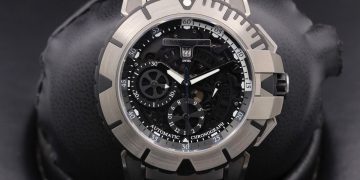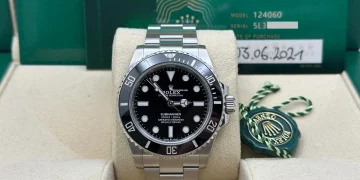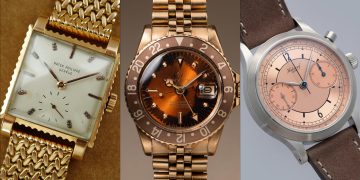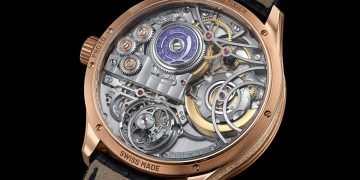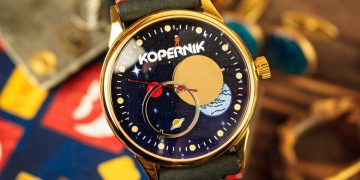The world of luxury watches is as much about heritage and craftsmanship as it is about prestige and exclusivity. Today’s most respected watch brands, such as Rolex, Patek Philippe, Audemars Piguet, and Omega, have each forged their reputation through a rich history marked by pivotal moments in time. These historical events helped establish the perception of luxury, quality, and prestige that now defines these brands.
In this article, we will explore some of the most significant historical events that have contributed to shaping the modern image of the luxury watch industry. From early innovations in watchmaking to their connections with exploration, fashion, and even global conflicts, these moments have solidified luxury watches as symbols of exclusivity and sophistication.
1. The Birth of Swiss Watchmaking in the 16th Century
a. The Rise of Swiss Watchmaking
Switzerland is home to many of the most renowned luxury watch brands today, but the origins of the Swiss watchmaking industry can be traced back to the 16th century. In the 1500s, Swiss craftsmen began making intricate timepieces for wealthy aristocrats and nobility. The key moment was when Geneva, in particular, became a hub for watchmakers, thanks to its skilled artisans and patrons who were interested in acquiring fine, handmade timepieces.
Swiss watchmakers, such as Abraham-Louis Breguet, would go on to revolutionize the watch industry with innovations like the tourbillon and perpetual calendar, setting the stage for Swiss watches to become synonymous with excellence. This era established Switzerland as the heart of luxury watchmaking, laying the foundation for the high-end timepieces we recognize today.
b. The Rise of Craftsmanship and Precision
During this time, watchmakers focused on perfecting the craft of watchmaking, which continues to be a defining characteristic of luxury watches. It was during this period that brands like Patek Philippe, founded in 1839, began their journey toward becoming symbols of elite craftsmanship.
2. The Development of the Wristwatch During World War I
a. The Wristwatch’s Shift from Utility to Luxury
While watches were traditionally worn in pockets, World War I was pivotal in popularizing the wristwatch. Soldiers in the trenches needed a more practical way to tell time while keeping their hands free, and the wristwatch quickly became a preferred solution. Brands such as Rolex, Longines, and Omega were among the first to produce wristwatches for military personnel.
Although initially viewed as utilitarian, this period marked the beginning of the wristwatch’s transition into a symbol of status. The combination of precision and durability required for military watches served as a foundation for luxury watches, as these brands would later apply the same principles of quality and attention to detail in their civilian models.
b. The Advent of Iconic Models
World War I also saw the development of iconic models that would later be considered symbols of luxury. For example, Rolex’s Oyster case was introduced in the 1920s as the first truly waterproof watch. The military’s use of these watches and their durability helped elevate their status. These rugged watches, once seen as purely functional, became a statement of precision and craftsmanship—traits that continue to define luxury watches today.
3. The Influence of Exploration and Innovation in the 20th Century
a. The Role of Watches in Exploration
Throughout the 20th century, luxury watches gained their reputation as tools for the adventurous, often accompanying pioneers on their expeditions. Notably, Omega became synonymous with space exploration when NASA selected the Omega Speedmaster as the official moonwatch for the Apollo missions in the 1960s. The Speedmaster’s involvement in the 1969 moon landing became one of the defining moments for Omega’s identity as a watch of exceptional precision, endurance, and innovation.
Similarly, Rolex watches were worn by mountaineers who conquered some of the highest peaks on Earth, including Sir Edmund Hillary and Tenzing Norgay during the first successful ascent of Mount Everest in 1953. These explorations elevated watches from simple accessories to tools of human achievement, setting the stage for their status as luxury icons.
b. The Evolution of High-Performance Features
As exploration and adventure became intertwined with luxury watches, brands began incorporating high-performance features into their models. For instance, Audemars Piguet’s Royal Oak, introduced in 1972, featured a bold, integrated steel case and was marketed as the first luxury sports watch. The success of the Royal Oak would forever change the perception of watches, paving the way for a new market of luxury sports watches.
4. The Quartz Crisis of the 1970s
a. The Impact of Quartz Technology
The 1970s marked a significant turning point in the watchmaking industry with the introduction of quartz technology, which was cheaper, more accurate, and required less maintenance than traditional mechanical movements. Swiss brands, which were predominantly mechanical, found themselves in danger as the quartz revolution was led by Japanese companies such as Seiko. The resulting Quartz Crisis led to massive changes in the industry.
b. Swiss Resilience and Innovation
While the crisis severely affected Swiss watchmakers, it also forced them to innovate. Many brands began to experiment with quartz movements themselves, but also doubled down on the things that made them unique—craftsmanship, exclusivity, and luxury. The Swiss watch industry fought back by focusing on mechanical movements, craftsmanship, and luxurious materials—qualities that no quartz watch could replicate.
This period helped solidify the modern luxury watch as something that was far more than just a timekeeping tool. It was about heritage, style, and the ability to connect with a tradition of excellence. As a result, Swiss mechanical watches became even more coveted by watch collectors and enthusiasts who valued the art of horology.
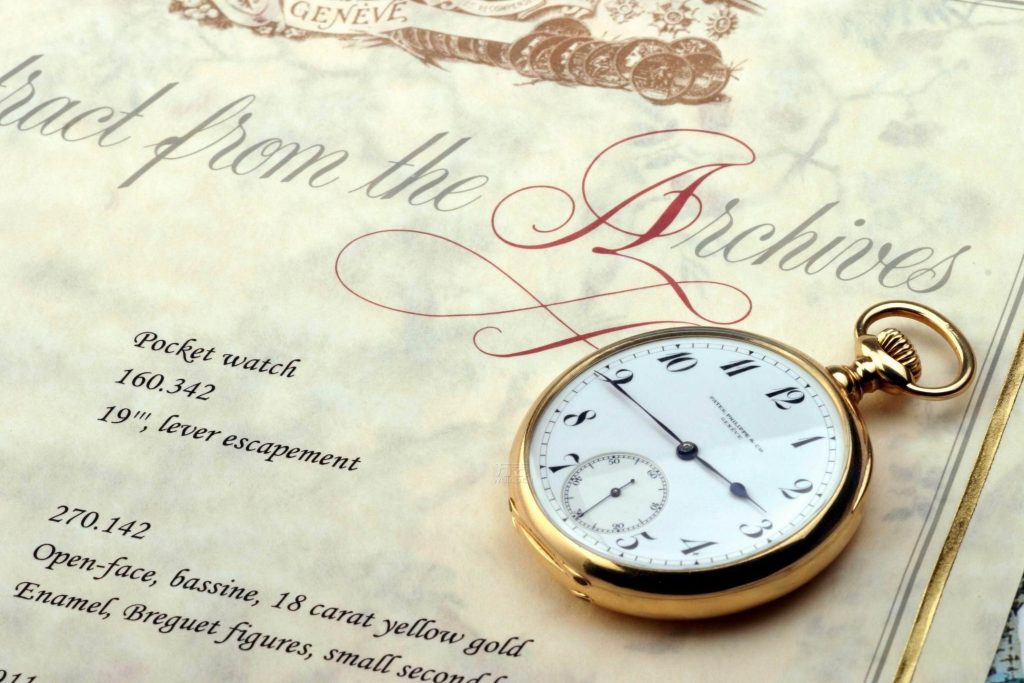
5. The Rise of Iconic Brand Collaborations and Partnerships
a. Luxury Watches and High Society
The 1980s and 1990s saw luxury watch brands, such as Rolex, Patek Philippe, and Audemars Piguet, further cement their status by aligning themselves with the elite of high society, including sports stars, business moguls, and celebrities. This created a strong association between luxury watches and status, leading to the rise of celebrity endorsements and sponsorships that would further enhance the prestige of these brands.
Rolex, for example, became the sponsor of prestigious sporting events like Wimbledon and the Yacht Club, further associating their timepieces with the world of wealth, sophistication, and success.
b. Limited Editions and Exclusivity
As the demand for luxury timepieces grew, watch brands began creating limited-edition models that were only available to select customers. The idea of exclusivity and the limited availability of certain models became a key driver of their appeal. For example, the Patek Philippe Nautilus and Audemars Piguet Royal Oak are now considered some of the most prestigious watches in the world because of their scarcity and association with the rich and famous.
6. The Modern Era: Technology Meets Tradition
a. Innovation in Design and Functionality
Today, the watch industry is at a crossroads between tradition and modernity. The introduction of smartwatches, such as the Apple Watch, challenged traditional watchmaking in new ways. However, luxury brands have responded by embracing innovation while maintaining their focus on craftsmanship. Brands like TAG Heuer and Omega have incorporated smart technology into their designs without compromising their legacy of high-quality mechanical movements.
b. Sustainability and Ethical Sourcing
In recent years, luxury watch brands have increasingly been challenged to demonstrate their commitment to sustainability and ethical sourcing. Companies such as Patek Philippe and Rolex are investing in sustainable practices and responsible sourcing of materials to appeal to the growing market of socially-conscious consumers. These efforts are shaping the next chapter in the history of luxury watches.
7. Conclusion
The image of today’s luxury watch brands is the result of centuries of innovation, resilience, and strategic positioning. From the early days of Swiss craftsmanship to military influence, exploration feats, the Quartz Crisis, and the rise of celebrity endorsements, each event has contributed to the prestige and desirability of these iconic timepieces.
As we look ahead, the luxury watch industry continues to evolve, blending traditional craftsmanship with modern technology and sustainability. Yet, it remains firmly rooted in its rich history, ensuring that Swiss-made watches will always be synonymous with luxury, precision, and timeless appeal.



